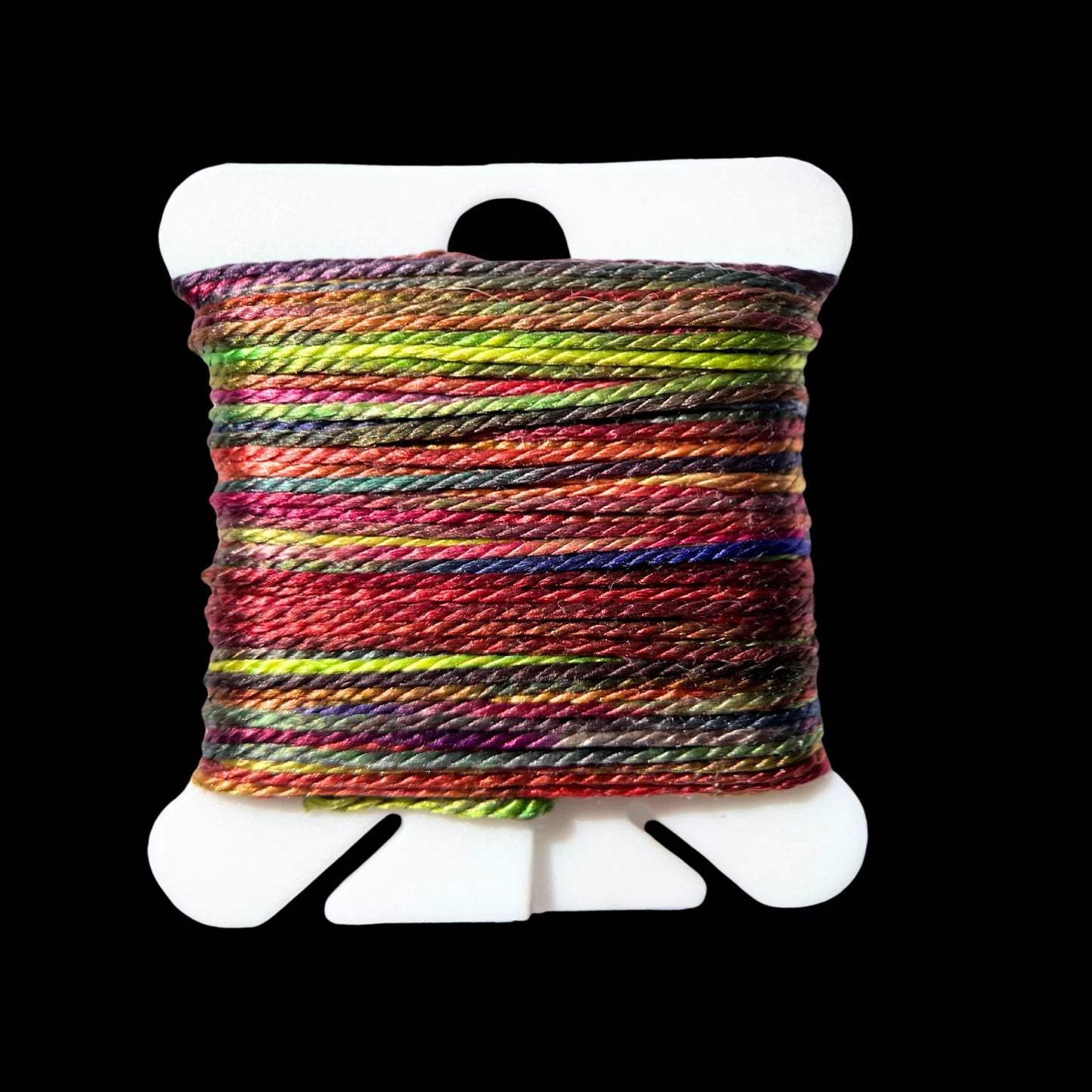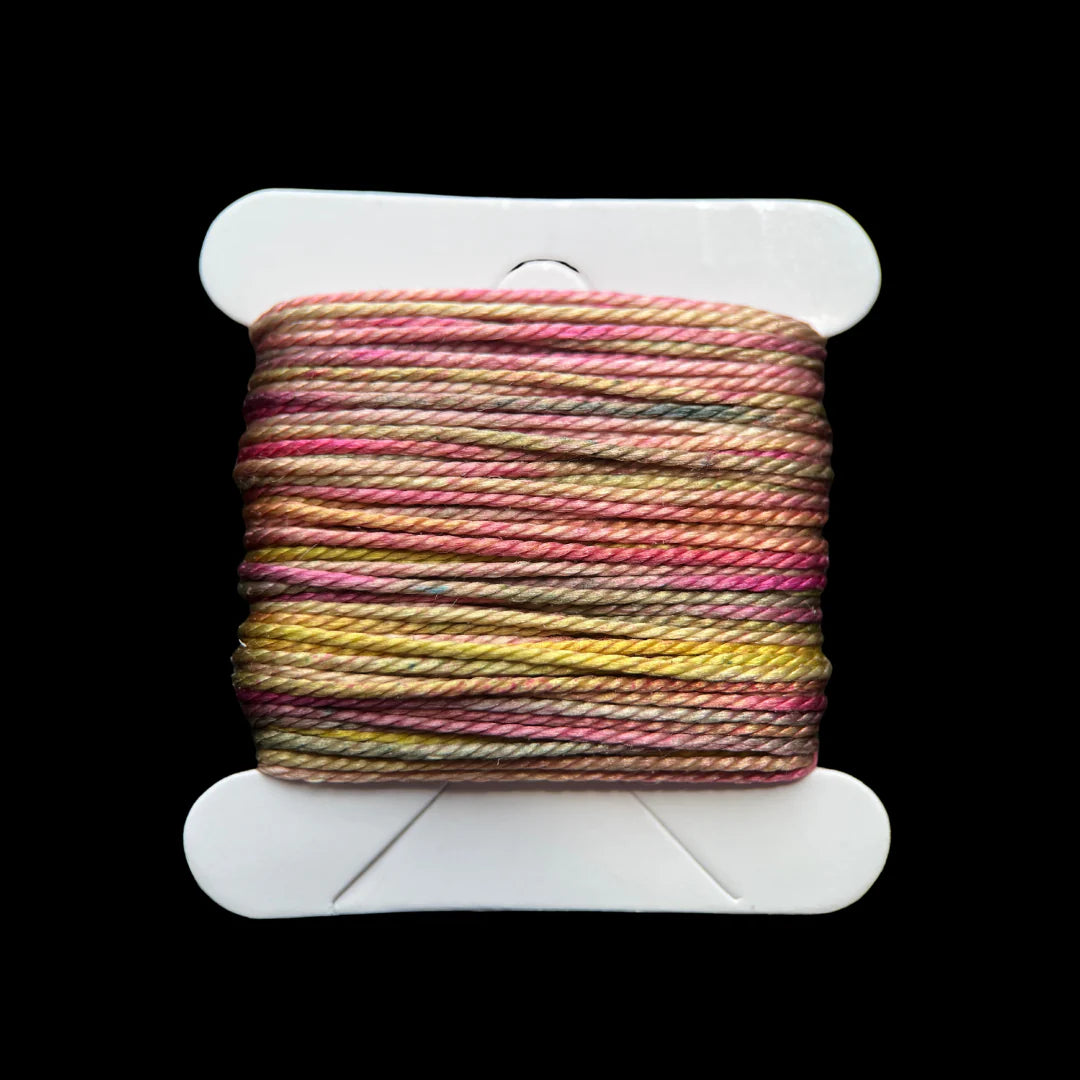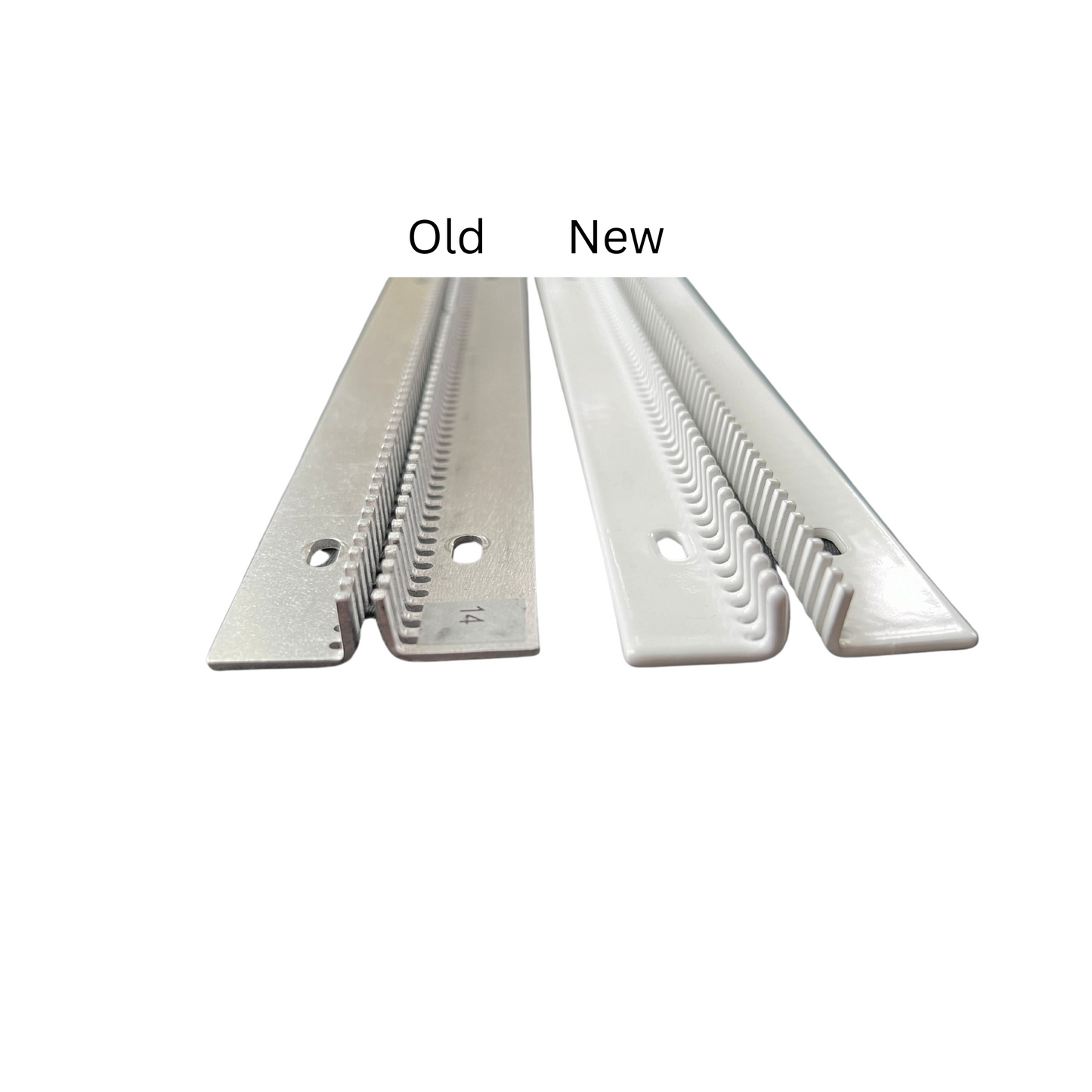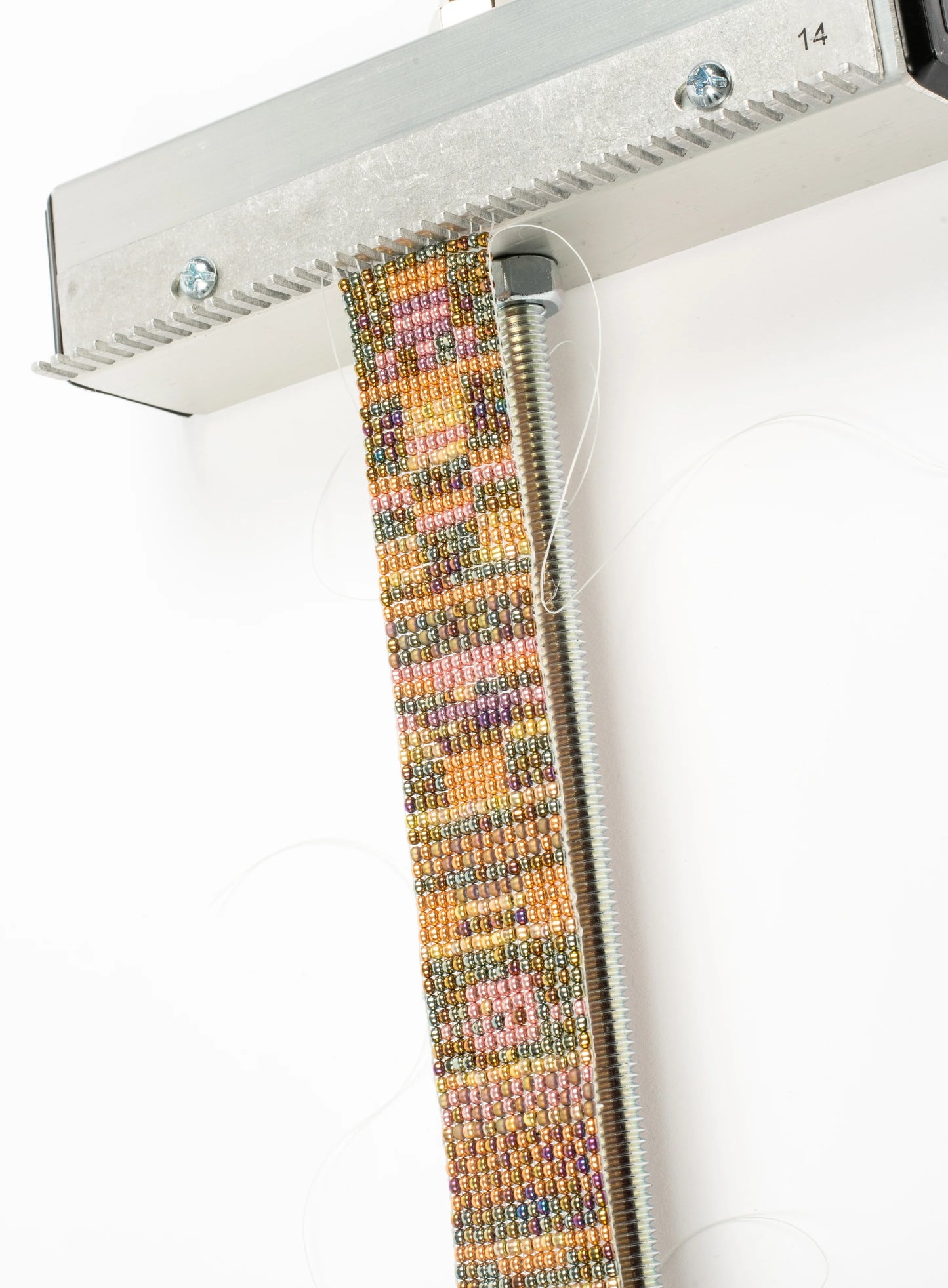![Weaving Wellness Month: Ergonomics [Updated]](http://mirrixlooms.com/cdn/shop/articles/2016.01.27.weaving-wellness-month-ergonomics-3_1445x.jpg?v=1595009678)
This blog post was a part of Mirrix’s Weaving Wellness Month in January, 2015
Today’s post is by tapestry weaver and teacher extraordinaire Rebecca Mezoff. In it she discusses ergonomics for weavers.
Rebecca Mezoff retired from occupational therapy after the 17 years of showering with other people (fully clothed!) got to her and is now happily messing around with yarn full time. She still lectures on ergonomics and maintaining health while creating with fiber. If interested in further information, she is teaching a half-day class called Creating Without Pain: Ergonomics for Fiber Artists this April at YarnFest 2016 in Loveland, CO. You can find out more about Rebecca and her goofy exploits on her website and blog at www.rebeccamezoff.com.
Creating without pain… or how not to let your loom get the best of you
I used to be an occupational therapist. For seventeen years I handed out advice to many people and finally decided to take my own advice and do what I loved most. I left the field to become a full time fiber artist. But my OT skills have come in handy when it comes to keeping myself healthy. Body positioning while weaving is only the tip of the iceberg of maintaining our ability follow our fiber pursuits for decades more. But let’s start there anyway.
How should my body look while I’m weaving?
That depends on many things. The first is what kind of body you actually have. We have all heard the advice that when seated our hips, knees, and ankles should be at 90 degrees and our head balanced over a straight back. This is not realistic and probably isn’t even the best position for your spine. Best practice now indicates that a slight recline with back support while seated is the best position for your lumbar spine.

In the image above, I am sitting on a folding chair and weaving on a low table on a Mirrix loom. This is a good position for weaving if you have the right height chair and table. I would recommend trading the folding chair for something with some padding and perhaps even a pelvic tilt option.
When weaving at a table like this, make sure you are tall enough that your feet reach the floor. Short people have a disadvantage and should use footrests. Resting your feet for long periods of time on chair rungs is not good for your circulation or knees. If you are too short for the chair you are using, get a footrest of some sort.
Your hips should be at 90 degrees or a little more. That means you can rest backwards a little on a backrest. This is the best position for your lumbar spine. A middle-of-the-road desk chair with some adjustments is a worthwhile investment for your weaving station.
If you weave on a floor loom, you are not going to be able to sit in the position I’m describing here. Most floor looms will put your thighs on a downward slant especially when you reach for the treadles. This includes upright tapestry looms. Make sure that the foot that isn’t treadling has some support. Some looms have bars to rest your heels on and these are the best. If your loom does not, you might put a box next to the treadles or prop up the unused treadles so you are not straining your hips and putting pressure on the backs of your legs. A slant cushion or a slanted bench are great options.
If you are using an upright loom like a Mirrix or a large upright tapestry loom, make sure you are advancing your work often enough that you’re not reaching above your shoulders. Ideally your work area should be chest level or below. Take the time to advance your work or change your chair height. Notice in the image below Tommye is working below shoulder height.

When weaving on a Mirrix, consider using an easel or a chair or table with adjustable heights. If you have surfaces that are changeable, it is most likely you’ll achieve a comfortable height for working. You can move your seat up (and add a footrest). You can make the table lower (home improvement stores in the USA sell very inexpensive small plastic tables with several different height adjustments). An easel may allow you to move the loom up and down the easiest and even allows you to slide the surface more horizontally over your lap.
What else can I do to maintain my health?
- Do you have good lighting? If your light is poor, you are more likely to hunch forward, strain your eyes, and assume weird positions to see what you’re doing. Wear your glasses. Get good light.
- Do you take breaks? If you’re the person who starts weaving and doesn’t realize three hours have passed, you need to create a situation that forces a break. Drink a lot of water! You have to get up to use the bathroom. Set a timer on the other side of the room so you have to get up and turn it off. You should take a 5 minute break every 25 minutes. Change positions. Do another task for a few moments. Stretch.
- Do you ever move your body beyond your daily tasks? Exercise. It is important. Walking is the very best thing you can do for yourself. Maintain your strength and flexibility with some gentle upper extremity exercises. A water aerobics class, a gentle yoga class, or some tai chi are fantastic ways to get into a movement habit if you are currently very sedentary. If you already exercise, make sure you are doing some strength training and stretching.
- Can you go all day without a pee break? Drink water. It keeps your tissues hydrated.
- Are you having fun? Laugh. It keeps you young.
Weaving tapestry requires a lot of pinching motions. The muscle bellies that flex our fingers are in our forearms. Lots of pinching or rotating of the forearm bones around each other can cause tendonitis or inflammation in these muscles and tendons. Stretching and taking breaks frequently is the best way to keep this kind of inflammation from building up.
This stretch is a great one for the forearm muscles. I call it “angel hands”. Put your palms together. Your elbows will be winging out sideways. Gently push the heels of your hands toward the floor. This is a gentle movement. You don’t want to feel pain, just a gentle stretch. Hold for 10 seconds or so and repeat several times. You may not be as flexible as I am. If your forearms are not forming a straight line across, that is okay.

And always remember, pain is your body’s way of saying something is wrong. If something is hurting chronically, go and see your physician. Stop and evaluate. Don’t push through it.






